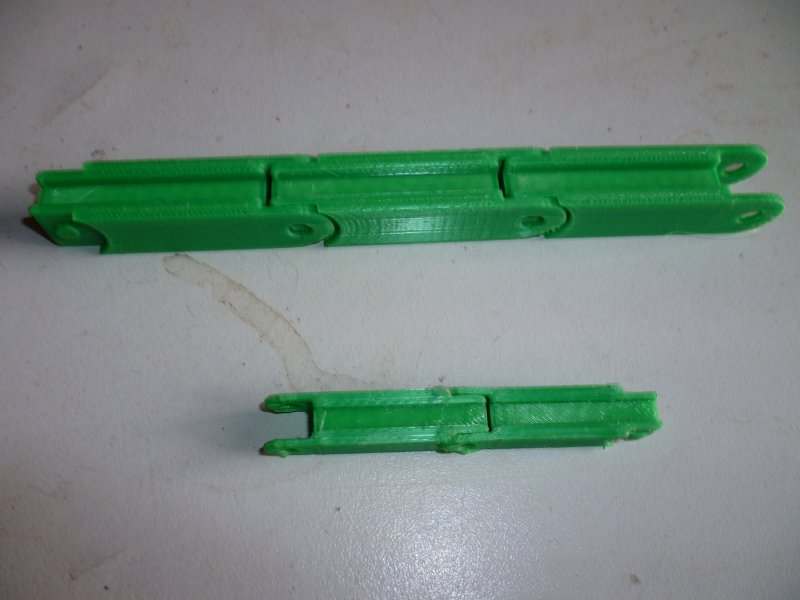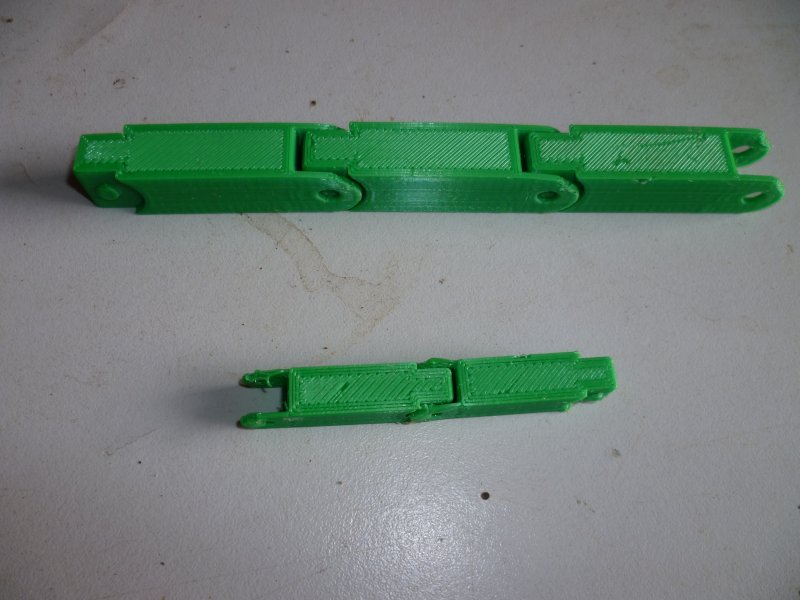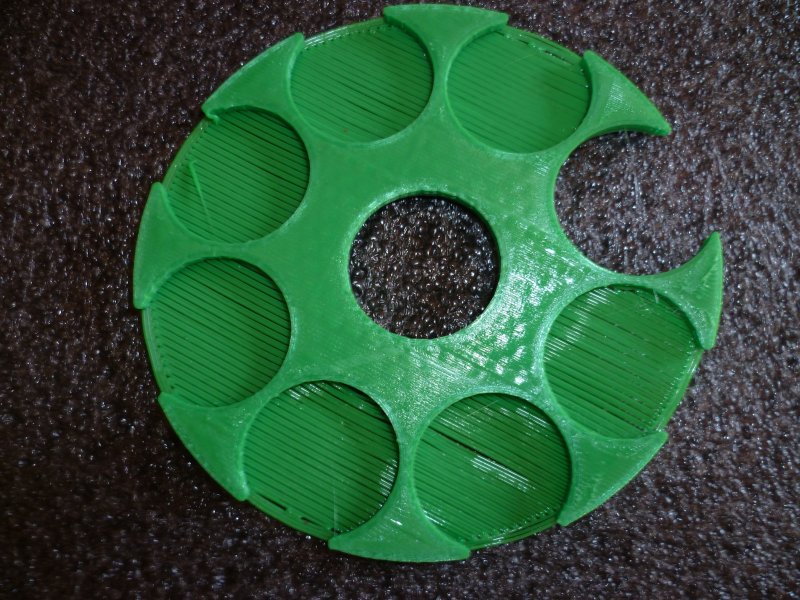-
Posts
4,808 -
Joined
-
Last visited
Content Type
Profiles
Forums
Events
Blogs
Gallery
Everything posted by dikman
-
Thanks for that, Alexander, it makes for an interesting story.
-
That is a very old motor and clutch!
-

New to industrial sewing machines Juki LU-562
dikman replied to jshep's topic in Leather Sewing Machines
Sorry, I just assumed that anyone using a forum knew what a "sticky" was. My bad. Thanks Wiz. Wiz answered your question with his first post. The maximum size you will be able to use reliably is #138 thread. It doesn't look too bad on a dress belt, but on gunbelts it can look a bit "small", likewise on a sheath. 3/8", by the way, is the maximum you can fit under the feet and still sew. -
Well, that explains the missing bits - if the crate was open then anything that was loose and not too heavy has probably been "appropriated". As Don said check the casing/frame very carefully, if it looks ok then you may be onto a good thing (even better if you can beat him down a bit).
-
Ahh, holsters, if your friend wants to sew holsters with a machine then he's looking at a heavy-duty machine. A minimum is a 441-class. Don't even think of anything less.
-
In my (limited) experience the worst thing that can happen with older machines is to have screws missing!! I have scrapped one or two older domestic machines and have a wonderful assortment of screws from them, but so far none of them have fitted any of the industrial machines that I have! Good luck.
-

New to industrial sewing machines Juki LU-562
dikman replied to jshep's topic in Leather Sewing Machines
Advansite, have you read Wiz's sticky at the top? It is an absolute necessity for anyone starting out and wanting to use a machine to sew leather. Many newcomers who hand stitch ask the same thing, they expect to be able to use a similar size thread when machine stitching, unfortunately that is way beyond the capability of most of the machines commonly used by members here. -
If that's ALL that's missing it's no big deal, motors and belts are readily available and you can probably buy the correct table for it (or make your own or modify a used table if you can find one). If you want to make it "original" then you should be able to buy all these bits from one of the vendors on here - but you'll have to find out the cost first to see just how much of a "bargain" you end up with. Mark, I must admit it does seem a bit odd.
-

Zipper installation multipurpose guide
dikman replied to RockyAussie's topic in 3D Printers and Lasers
Spare zipping??? Looks like you've got enough to run a zip from here to the moon! I have a few zips that I recovered from a tent I scrapped and it fits the large guide nicely, I just don't make anything that needs zips. Still, I might as well run off a few more, just in case. As for the nozzle clearance yep, I'll have to check it as when I set it last the weather was quite hot and now it's cold. In fact it's so cold in the shed where I have the printer that when I turned it on a couple of days ago the display was garbled and it said it was too cold to run!!! -

Zipper installation multipurpose guide
dikman replied to RockyAussie's topic in 3D Printers and Lasers
Thought I'd print out the zipper feet, just to see how they worked. Came out fine, although there's a slight deformation at the top edge of the rounded bits sticking forward. Doesn't affect how they work though, and they're a nice snug fit when they snap together. Pity I don't actually sew in any zips. -

Singer Age by Serial Numbers Slide Chart
dikman replied to Gregg From Keystone Sewing's topic in Leather Sewing Machines
So according to that chart my 51W59 was made before 1940 and the 111WSV77 in 1946 (that's assuming that the WSV's were included in the same numbering scheme, which I figure is most likely). By my reckoning that makes the W59 probably 80 years old at least. -

Zipper installation multipurpose guide
dikman replied to RockyAussie's topic in 3D Printers and Lasers
Brian, I reckon putting them all in one place (3D section) is a good idea. If you don't you'll soon have the Mods giving you a severe beating with a wet flannel! -
Thanks for the offer, Brian. I've printed out quite a few things before and never had this problem so it's obvious that my fiddling around with the file has caused the issue. The bobbin measures 25.67mm/1.01" D x 11.2mm/.44" high. I figure it needs a smidgin more diam. to fit comfortably. My idea is to maybe stack two or three bobbins per slot, which is why the lid will need a hole so it can be rotated to the stack I want and then just tip out those. Singer bobbins will obviously be a bit loose (smaller diam.) but should still work. I should have just made a new (solid) lid with a centre hole and 1 hole at the edge, I guess. I still want to try and figure out what I did wrong. It's an hour later and I found out what I did wrong! I used the "scale" function to lower the height of the cylinder significantly, which, of course, meant that it also shrank the bottom layer accordingly - down to one layer of filament!! I'm learning..........
-
Thought I'd experiment with this. I started with a top piece so reduced the height and punched out one of the rebates to make a through hole. First problem, it only laid down a single layer before starting the rebates and as you can see it's not fused together (too far apart), second it warped when I removed it even though I used a heated bed, third the rebates aren't wide enough for my Seiko bobbins and fourth I seem to have introduced some distortion while messing around with the file . Back to the drawing board (in this case 123D). Wish I knew what I was doing .
-

Singer Age by Serial Numbers Slide Chart
dikman replied to Gregg From Keystone Sewing's topic in Leather Sewing Machines
First time I've seen anything with a reference to "W" serial numbers! Nice. -
I tend to bounce around from forum to forum sometimes.........
-
Don't know how I missed this one - I measured the original handwheel off my 111WSV77 and yep, it's 1/2", so it's a pretty safe bet that the 155 would be the same as Glenn and Bob said.
-

Zipper installation multipurpose guide
dikman replied to RockyAussie's topic in 3D Printers and Lasers
Of course! It's always nice to have a new toy . I reckon you'll enjoy playing with one. There are many free files available on thingiverse for all sorts of things - some of them even useful. -
I like it (being a Trekkie from way back when).
-
I've moved one or two of these types of things . Remove the head, remove the motor (assuming it's a clutch as they're heavy!), dismantle the legs and it all fits into the back of my Subaru XV with the seats down, of course. So should fit in a RAV4. Take along some old blankets etc for padding.
-

Zipper installation multipurpose guide
dikman replied to RockyAussie's topic in 3D Printers and Lasers
Maybe you should have printed just a couple first to try them out? I wonder just how critical that sideplay will be, if it's a snug fit over the zip then it shouldn't matter too much? -

Zipper installation multipurpose guide
dikman replied to RockyAussie's topic in 3D Printers and Lasers
Gary, as Brian said if you buy an already-built one (look for reviews first to see what people think of it) then all you need to learn about is the slicer programme that converts to the G code needed to print. I use Slicer, it and Cura are probably the most widely used. This part of it isn't to hard to master. As for filament it's pretty cheap in the US, just start with your basic PLA. It gets complicated if you start fiddling with the operating system! -
A couple more thoughts, Brian, I measured my bobbins and the Seiko is 1", the others slightly under so although they'd be a bit loose (which won't matter) they'll fit the existing design. Not knowing the height I don't know how many would fit in each slot, of course. This would mean that all the existing lid needs is a hole in it for loading/unloading (to use the firearm vernacular ). If you made one specifically for the smaller bobbins, so it only held one in each slot then by keeping the central shaft long one could simply stack them on top of each other. Lots of possibilities here .
-
That would be good and might suit a wider audience. The Singer/Pfaff bobbins aren't quite the same diameter (which I'm sure you already know) so making it for the wider one should cover a wider range of bobbins. One other thing that occurred to me is that you could obviously stack 2 or 3 of the smaller bobbins in each of the slots, so if the top piece was made with a hole in it that could be rotated to a particular slot then the bobbins in that slot could be emptied out without tipping the whole lot out.
-

Zipper installation multipurpose guide
dikman replied to RockyAussie's topic in 3D Printers and Lasers
Thanks mate. Some of those thinners are......nice.......wheeee.





